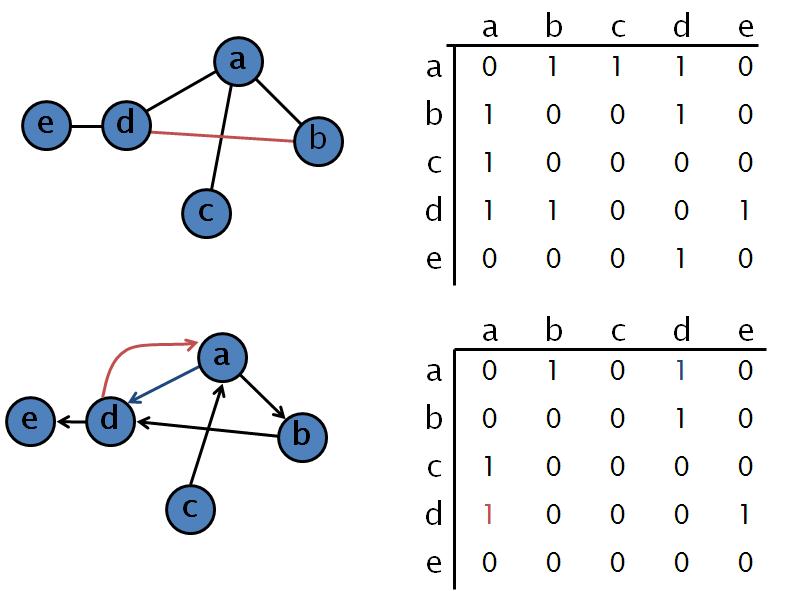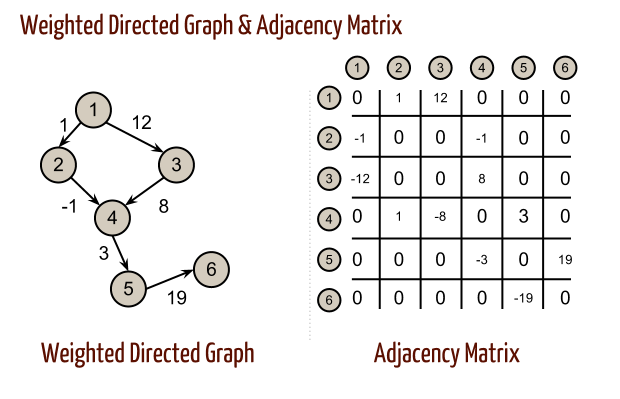Fundamentals of data structures- Graph
Table of Contents
1 Abstract data type - Graph
Graphs Basics
Graphsare data strcutures that consist of a finite number of vertices/nodes/points and edges/arcs/lines connecting those vertices/nodes/points.- Graphs can be
undirected,directedandweighted. - The edges/arcs/lines between nodes can be used to represent complex relationships.
- Arrows on edges/arcs/lines can be used for directional relationships.
- If edges on a graph are all one-way, the graph is a
directed graphordigraph.
- If edges on a graph are all one-way, the graph is a
- Attributes/values can be associated with edges/arcs/lines to specify the nature of relationships. Those edges with values are
weightededges.
- Arrows on edges/arcs/lines can be used for directional relationships.
An example of undirected graph:


An example of directed graph with weighted edges:

Applications of Graphs
- finite state machine
- roads between towns and cities with distances as weights
- computer networks: computers and devices as nodes and bandwidth as weights.
- Website: the vertices represent web pages and directed edges represent links from one page to another.
- In chemistry a graph makes a natural model for a molecule, where vertices represent atoms and edges bonds.
- In biology and conservation efforts where a vertex can represent regions where certain species exist (or inhabit) and the edges represent migration paths, or movement between the regions.
Operations on a Graph
- Adding a node
- Deleting a node
- Adding an edge
- Deleting an edge
- Checking if there is an edge between node A and B
- Finding the successors of a given vertex
- Finding a path between two vertices
Implementing Graphs - adjacent matrix and adjacent list
Adjacency matrix:- Using a two-dimensional array, a weighted or unweighted graph can be implemented.


Advantages of adjacency matrix:- easy to add or remove an edge
- easy to check if an edge existing
Disadvantages of adjacency matrix:- The larger the graph (more nodes), the more memory is needed.
- For a sparse graph, space will be wasted for not storing many edges.
- If static array is used for the matrix, adding or deleting nodes may not be easy.
- Using a two-dimensional array, a weighted or unweighted graph can be implemented.
Adjacency list:- For a sparsely connected graph, adjacency list implementation is more space efficient. In this implementation:
- All nodes are stored in a list
- Each node in the list then points to a list of adjacent nodes it connects directly.
- the adjacent node lists can contain a list of key value pairs of node and the weight.
- For a sparsely connected graph, adjacency list implementation is more space efficient. In this implementation:

Advantages of adjacency list:- Easy to find successors of a node
- Easy to find all neighbouring nodes
- Space efficient as it only stores connected nodes
Disadvantage of adjacency list:- It is time consuming to check if an edge is part of a graph